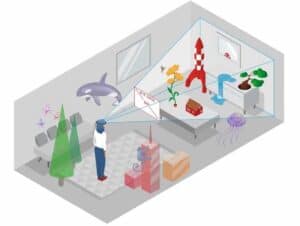An alert developer stumbled across the specs for the Magic Leap One field of view, which the Mixed Reality startup has kept under wraps. The FoV question repeatedly came up in the so-called “demos” they’ve held on Twitch for the past few months. And like other questions about the innovative HMD, it went unanswered.
Magic Leap One Field of View
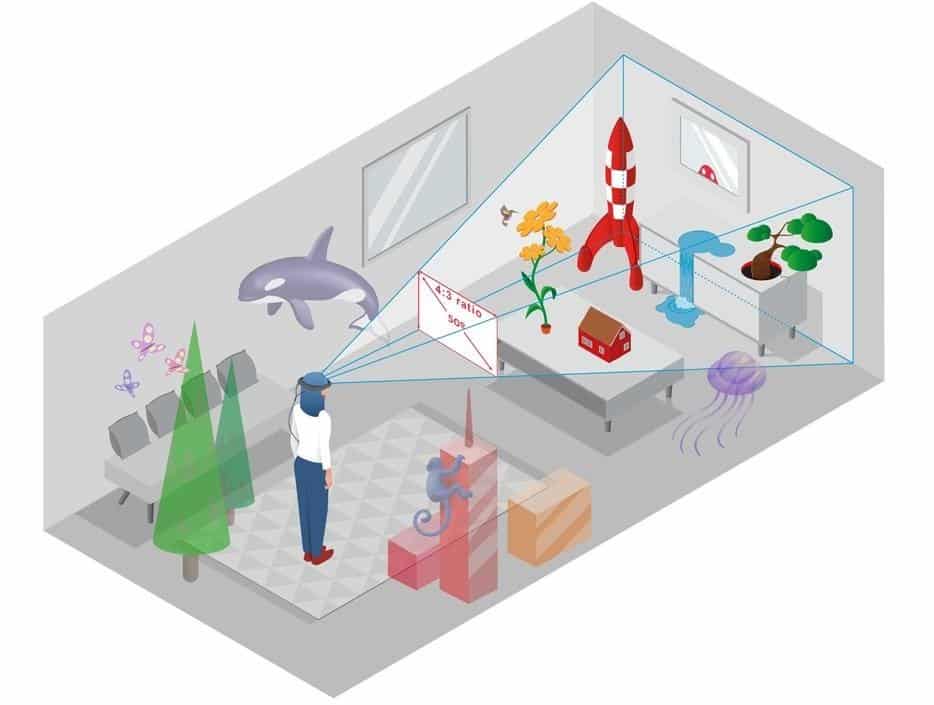
According to Next Reality, the Magic Leap One will have,
. . . a horizontal FoV value of 40 degrees, vertical value of 30 degrees, and a diagonal value of 50 degrees, resulting in a 4:3 aspect ratio. Compared to the HoloLens and its 16:9 aspect ratio, the Magic Leap One’s FoV is only one-third larger horizontally, but nearly double the vertical value, or approximately 45% bigger overall.
It’s an improvement over the narrow FoV of HoloLens but not by a lot. And it doesn’t come close to the Meta 2 headset (which is close to 90°) or other projects in the AR pipeline. Rumors are that a second-generation HoloLens is in the works with a significantly larger FoV.
One thing the Magic Leap One has going for it is the large steam-punk frame surrounding the lenses. Unlike the see-thru visor approach of HoloLens, you won’t notice much of your surrounding environment beyond the Mixed Reality area. In that regard, it will feel larger than it actually is.
That’s one way VR headsets get by with their passable 110° – but less than ideal – FoV. Everything outside the lens just doesn’t appear.
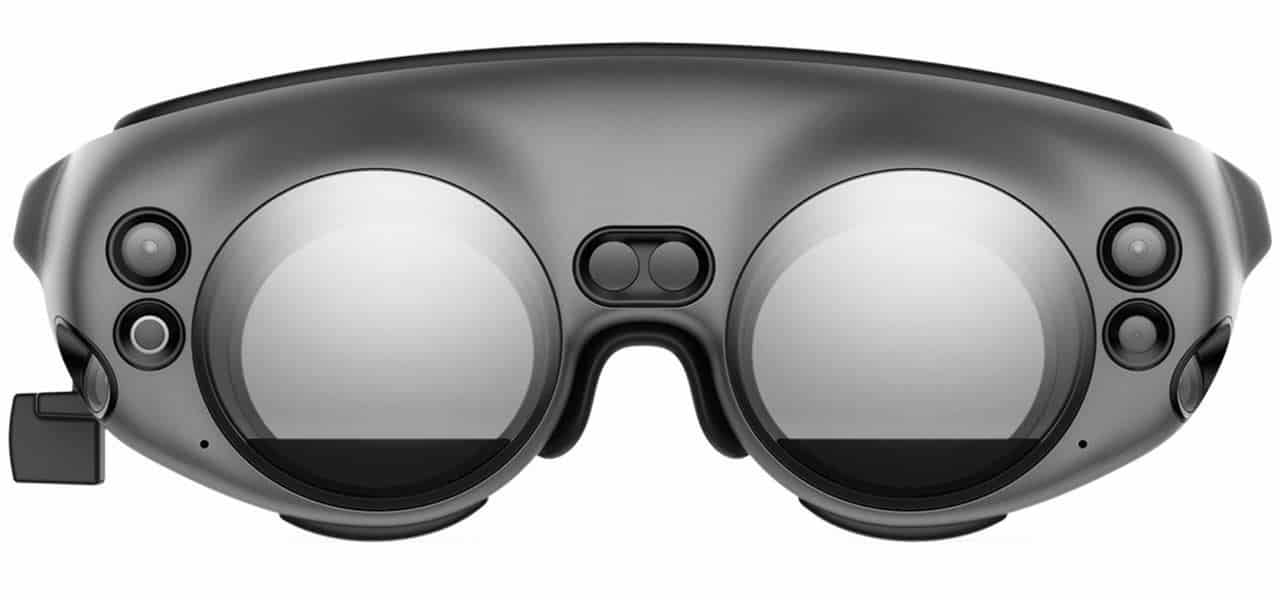
FoV by another name?
It’s an old marketing ploy – when a feature isn’t great, give it a new name to avoid comparisons. According to Next Reality, Magic Leap has coined a new term with a connection to geometry – the “View Frustum” – to describe “the space in which 3D objects appear”. They argue that FoV is a measurement for two-dimensional space, not the 3D experience of Mixed Reality.
They may have a point – but unless it’s embraced by the entire immersive tech industry, changing terms won’t help. And “frustum” sounds awfully close to another term you don’t want users to associate with your new HMD – frustration.
Real World examples
Next Reality offers some examples of the Magic Leap One’s FoV – or Frustum, if you insist – in a real-world context.
- At 40 inches away a large house cat, laying down (29″ long, 21″ high) would be fully within the viewing frustum.
- At 75 inches away a standing large dog such as a labrador or a retriever (54″ long, 40″ high) would be fully in the viewing frustum.
- At 110 inches away a 90 inch widescreen TV (80″ long, 58″ high) would be fully in the viewing frustum.
- At 144 inches away you can fully fit a family of three 6 foot tall humans, standing upright side by side within the viewing frustum. At 144 inches the viewable area is 104 inches long and 77 inches high.
VentureBeat offers a helpful comparison of AR VR fields of view. And when you look at the image below, you’ll understand why they see the FoV news as another “AR disappointment”. Yes, it really is that small.
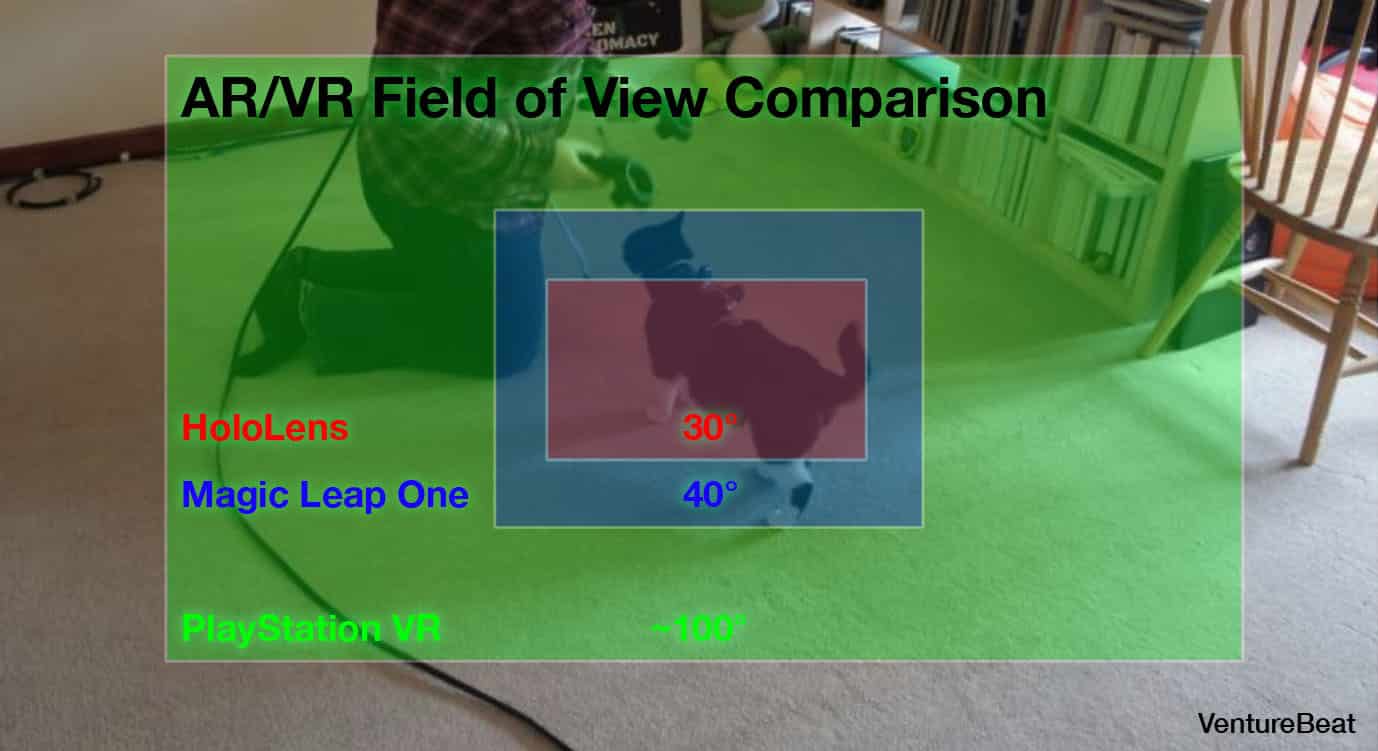
Radio Silence as of this morning
Don’t expect any more announcements from Magic Leap – CEO Rony Abovitz tweeted this morning that they’re in silent mode until product release. So you know the HMD is about to appear (Rony is not the silent type).
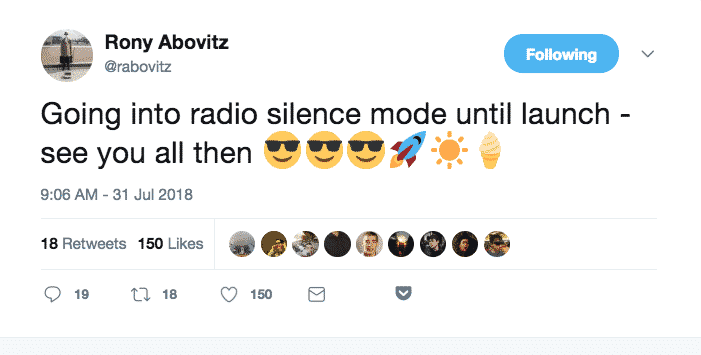
As we move away from the early dominance of Virtual Reality, it’s an exciting time for spatial computing. But don’t get your hopes up just yet. Unlike what those early Magic Leap videos showed, a 40° FoV isn’t going to give you whales emerging out of your floorboards and splashing to the ground in a deeply immersive experience. But you have to start somewhere and the Magic Leap One could still be a breakthrough device.
Not that far down the road, we’ll look back and wonder how we ever lived with a 40° FoV in our virtual world.
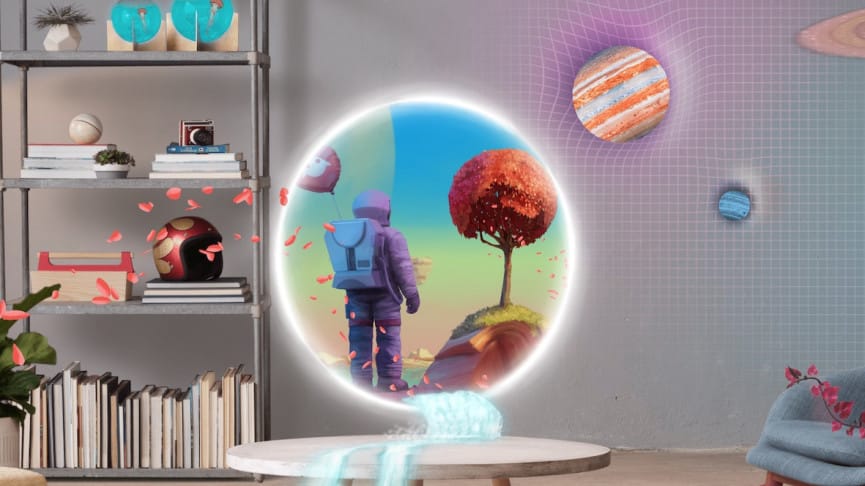
Emory Craig is a writer, speaker, and consultant specializing in virtual reality (VR) and generative AI. With a rich background in art, new media, and higher education, he is a sought-after speaker at international conferences. Emory shares unique insights on innovation and collaborates with universities, nonprofits, businesses, and international organizations to develop transformative initiatives in XR, GenAI, and digital ethics. Passionate about harnessing the potential of cutting-edge technologies, he explores the ethical ramifications of blending the real with the virtual, sparking meaningful conversations about the future of human experience in an increasingly interconnected world.

